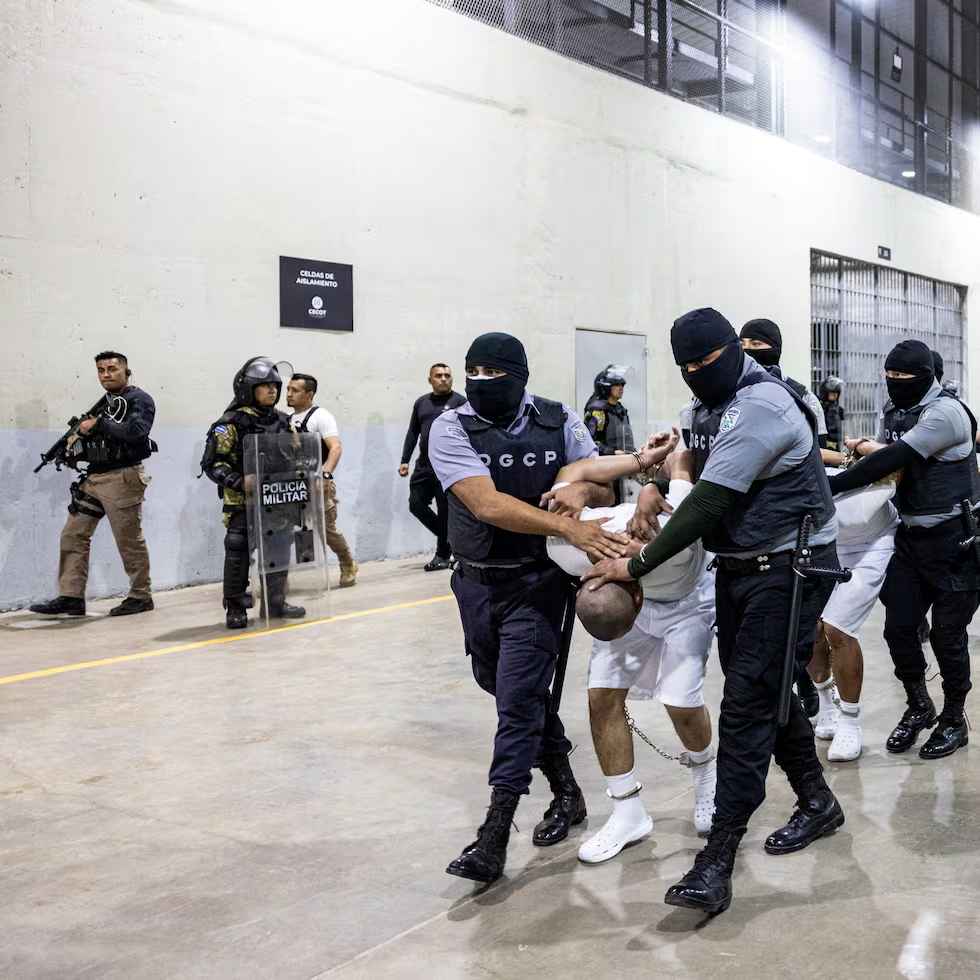Since President Donald Trump launched what he described as the “largest deportation” operation in U.S. history earlier this year, alarming reports have emerged of immigrants vanishing often without warning or due process.
One such case is Frizgeralth de Jesús Cornejo Pulgar, an asylum-seeker from Venezuela. He was scheduled to appear for a routine immigration court hearing last month. Instead, according to Mother Jones, he was covertly transferred alongside 230 other Venezuelan nationals to El Salvador’s notorious Terrorism Confinement Center (CECOT).

This is not an isolated incident.
In January, Ricardo Prada Vásquez, a Venezuelan working as a delivery driver in Detroit, took a wrong turn into Canada. He was promptly detained and deported to El Salvador, and then effectively “disappeared.”
“Ricardo’s story is devastating and we don’t know how many Ricardos are out there,” said Ben Levey, a staff attorney with the National Immigrant Justice Center, who attempted to trace Prada Vásquez’s whereabouts.
ICE later confirmed Prada Vásquez’s deportation but refused to disclose his location. Families like his often search in vain, finding their loved ones’ names wiped from the ICE online detainee locator system.
What Does It Mean To “Disappear” Someone?
The United Nations defines enforced disappearance as the arrest, detention, or abduction of a person by state agents or those acting with state support followed by a refusal to acknowledge their fate or whereabouts. Victims are essentially placed in legal limbo, outside the protection of the law.
“This is not strictly legal or illegal it’s an erasure of legal protections,” explained Gabriella Citroni, a human rights law professor and chair-rapporteur with the UN Working Group on Enforced Disappearances.
Before a 2010 UN convention, there was no universal legal framework prohibiting such actions.
Typically, targeted individuals include political dissidents, activists, students, and marginalized groups. “Disappearances are used to stifle dissent and instill fear,” Citroni said.

Why Disappearances Terrorize Communities
Enforced disappearance functions as a double-edged weapon, said Oscar Lopez, a journalist researching forced disappearances during Mexico’s “Dirty War.”
First, it dehumanizes the victim, denying them due process and often exposing them to torture and mental anguish.
Second, it traumatizes their families and communities. “They are trapped in an excruciating cycle of hope and despair,” Lopez noted. “That uncertainty becomes its own form of torture.”
As disappearances become frequent, entire communities are gripped by fear, unsure who might be taken next.
What Happens To The Disappeared?
The outcome varies, Lopez said, but in general, if victims survive, they are held incommunicado cut off from legal counsel and family. If killed, their bodies are typically hidden or destroyed.
“Sometimes they are buried in mass graves, sometimes cremated, or as was common in Latin America dumped at sea,” Lopez said.
Where Has This Happened Before?
History is littered with examples of state-sponsored disappearances:
- Argentina (1976–1983): ~30,000 people vanished under military dictatorship.
- Chile (under Pinochet): Over 1,000 disappeared.
- Guatemala (1960–1996): An estimated 45,000 forcibly disappeared.
- North Korea: Disappearances and abductions date to the 1950s.
- Syria: Around 136,000 people were forcibly disappeared under Bashar al-Assad’s regime.
Not all disappearances are carried out by official state agents. Adam Isacson of the Washington Office on Latin America pointed to irregular groups such as paramilitaries in Colombia or drug cartels in Mexico acting with government complicity.
“Sometimes this is ideological,” Isacson explained. “Sometimes it’s just corruption.”
Could What’s Happening In The U.S. Be Enforced Disappearance?
Despite legal barriers, the Trump administration has continued deportations to El Salvador, often targeting Venezuelans on dubious gang-related accusations. Trump has even mused publicly about detaining U.S. citizens abroad.
According to an April UN report, recent cases meet the criteria for enforced disappearance under international law.
“These detainees were unaware of their destination,” the report stated. “Their families were not informed. The U.S. and Salvadoran authorities have withheld names and legal statuses, and detainees have been denied all contact with relatives.”
Isacson agreed: “This meets the definition of enforced disappearance. The only difference between now and 1970s Latin America is that people still hope their loved ones are alive.”
“But even that hope,” he warned, “isn’t guaranteed. No one can say with certainty that Andry Hernandez the Venezuelan stylist who disappeared two months ago is still alive.”
Why Fear Is The Goal
The Trump administration has made its intentions clear: use fear as a deterrent. Officials have stated openly they hope immigrants will “self-deport” due to the pressure.
Sending people to facilities like CECOT where inmates are held in brutal, dehumanizing conditions only amplifies that fear.
“This creates a chilling effect,” said Rod Abouharb, an international relations professor at University College London. “Even legal residents fear they could be swept up, detained, and deported to a country they’ve never known.”
What Can Citizens Do?
Raising public awareness is essential, Lopez said.
“Protests, social media, online petitions anything that keeps a name visible in the public ey can pressure authorities and protect lives.”
Isacson urged Americans to support vocal lawmakers like Sen. Chris Van Hollen (D-Md.), who fought to meet with a Salvadoran deportee from Maryland despite legal protections barring the deportation.
Democrats, he said, should keep “making righteous noise,” and Republican moderates should be pressed into action.
“The more we stay loud writing, protesting, calling about these disappearances, the harder they become to ignore.”
This article was originally published by HuffPost.

Leave a Reply